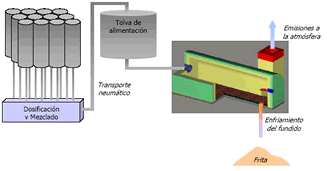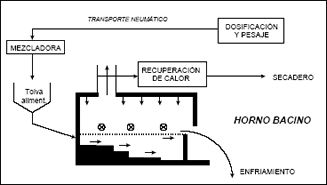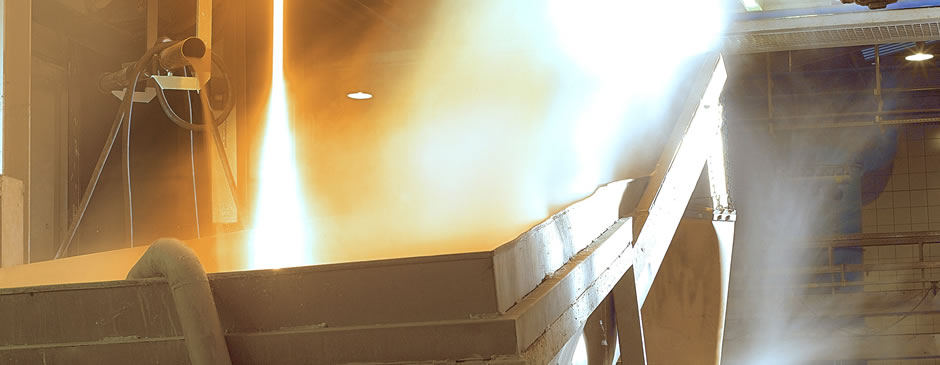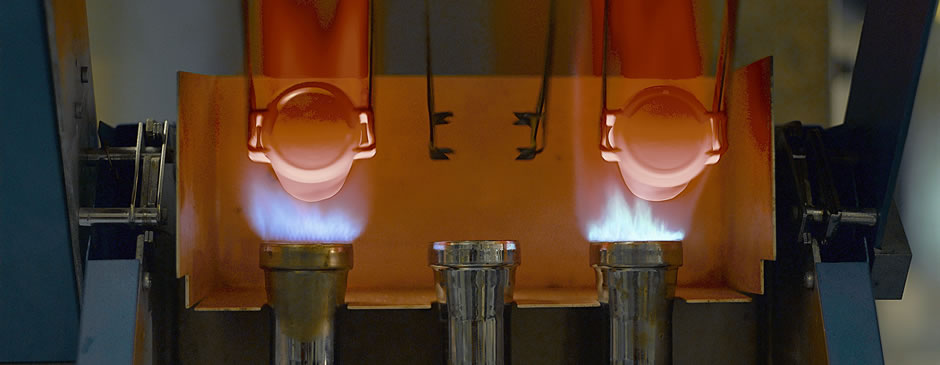Frits
WHAT IS A FRIT?
 In simple words, frits are vitreous materials that result from a molten process at high temperature (1350º - 1550º) in a fusion furnace.
In simple words, frits are vitreous materials that result from a molten process at high temperature (1350º - 1550º) in a fusion furnace.
 The melting falls in liquid state on a water receptacle that cools the mix, solidifying it with the appearance of tiny glass pieces.
The melting falls in liquid state on a water receptacle that cools the mix, solidifying it with the appearance of tiny glass pieces.
What are ceramic frits made of?
 The raw materials with which frits are made can be natural or synthetic products such as oxides, silicates, carbonates, aluminosilicates, borates, etc.. You can find the majority of the chemical elements in the compositions. The formulation of the compositions links these elements in a vitreous matrix, granting their stability and behaviour as an homogeneous solid.
The raw materials with which frits are made can be natural or synthetic products such as oxides, silicates, carbonates, aluminosilicates, borates, etc.. You can find the majority of the chemical elements in the compositions. The formulation of the compositions links these elements in a vitreous matrix, granting their stability and behaviour as an homogeneous solid.
Are they safe materials?
Even though frits contain chemical elements they should not be considered neither very toxic, nor toxic, or harmful products. The melting process makes the elements become completely inert, transforming the original mix in a glass, without risks for the human health or the environment*.
*Studies on frits made by the Jaume I University, Castellón, Spain.
CERAMIC FRITS PRODUCTION PROCESS
Ceramic frits are made melting raw materials in a furnace at high temperature (1350-1550 º). The melted material falls then into water, quickly quenching the molten, and turning it into a glassy solid insoluble material.

Frits production process
The melting furnaces
Frits production process uses melting furnaces with a production capacity of less than 30 tons/day. This process can either be developed in continuous (continuous furnaces this water or air cooling systems) or in discontinuous (rotator furnaces with water cooling systems).
The productions remains constant due to the continuous feeding of the raw materials in the furnace entrance. The melted material falls directly onto the water to cool, or passes through cooling rollers to produce frits.
The frit furnaces use natural gas and the common temperatures in the furnaces vary from 1350º to 1550º.

Continuous furnace scheme.
Ceramic frit cooling.
The melted mass must cool quickly at the furnace exit. There are two procedures: by water and by air.
In the water cooling, the melted mass falls onto a water receptacle where solidifies, breaking up in tiny pieces. This breakage of the solid mass facilitates their ulterior milling.

Water-cooling system diagram.

Air-cooling system diagram.
In air-cooling system the melted frit passes across two laminating rollers that laminate the vitreous molten. The result is a thin layer of material that falls onto a vibrator, which breaks the product into tiny scales. An advantage of this system is that the frit does not need to be dried afterwards.
Address: C/ Enmedio, 116,1º Dcha.
12001 Castellón, Spain
Tel: (+34) 964 20 53 72
Email:
Copyright 2024 © Anffecc · All rights reserved · Legal notice

